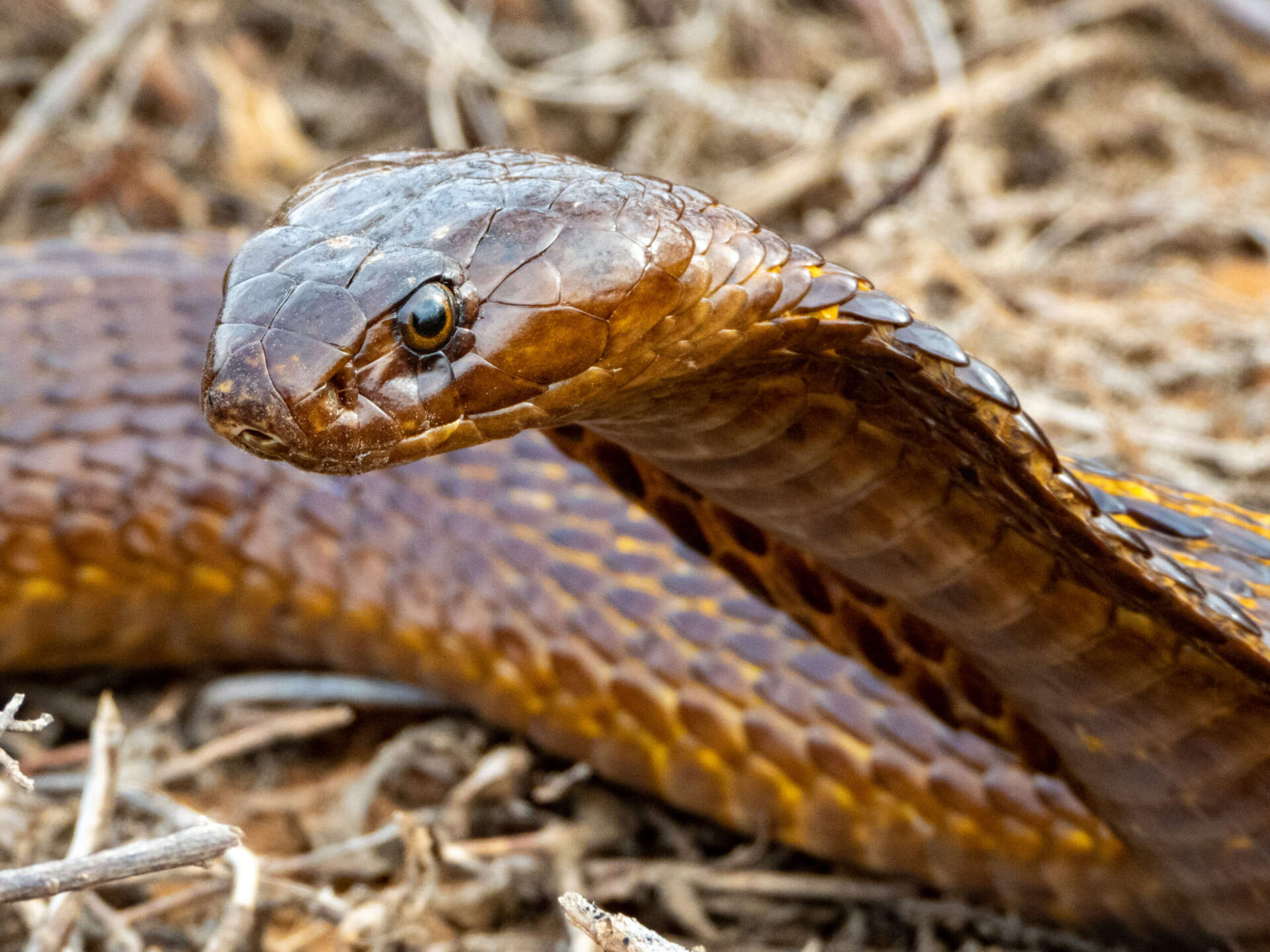Summary of The captivating Cape cobra – Zoo Atlanta:
Molly, a Herpetology Keeper at Zoo Atlanta, introduces the Cape cobra, one of the zoo’s iconic animals. Native to South Africa, Cape cobras are versatile predators and exhibit subtle sexual dimorphism. They are mostly active at dawn and dusk in summer and during the day in other seasons. Their breeding involves laying eight to 20 eggs, with the female guarding the nest. The Cape cobra’s highly toxic venom is primarily neurotoxic, posing serious risks like respiratory failure. Despite their dangers, these snakes play a crucial ecological role. The zoo participates in the AZA antivenom index to ensure safety. Molly encourages visitors to learn and appreciate these remarkable creatures.
- The fascinating biology and behavior of the Cape cobra as observed at Zoo Atlanta.
- Importance of Cape cobras in their natural ecosystem and the role they play.
- Characteristics of Cape cobra venom and its implications for human interaction.
- Conservation efforts and safety measures in place at zoological institutions such as Zoo Atlanta.
- The educational opportunities provided by zoos to raise awareness about Cape cobras and their conservation.
Zoo Atlanta is home to a variety of unique and fascinating species, but one stands out in its allure and complexity: the Cape cobra. Known scientifically as Naja nivea, this species commands attention with its striking behavior and potent venom. Found predominantly in South Africa, the Cape cobra thrives in arid regions and plays a vital role in its ecosystem. Understanding this species offers insight into the dynamic balance of nature and the need for careful conservation.
Cape cobras are versatile hunters and are considered generalist predators. This distinction means they do not restrict their diet to a single type of prey but instead feed on a broad range of organisms. Their dietary habits illustrate their adaptability and survival skills. They consume a variety of reptiles, amphibians, birds and their eggs, and mammals. This diverse diet is not just crucial for their survival but also helps in controlling the populations of these prey species in their natural habitats. The presence of Cape cobras as predators helps maintain an ecological balance, underscoring their importance within their ecosystems.
Sexual dimorphism, where males and females exhibit different characteristics, is relatively subtle in Cape cobras. While males generally have slightly larger heads and longer tails, both sexes are similar in size. This lack of extreme sexual dimorphism might be an evolutionary advantage for the species. The breeding season for Cape cobras typically occurs from August to January. During this time, females lay between eight to 20 eggs in a clutch, and notably, they guard their nests until the eggs hatch. This parental investment highlights a survival strategy that ensures the continuation of their lineage.
One of the Cape cobra’s most significant features is its venom. This is a topic that fascinates both scientists and the public due to its complex biological makeup. Cape cobra venom is primarily neurotoxic, affecting the nervous system and potentially leading to paralysis. It is composed of various toxins, including neurotoxins and cytotoxins, with the former constituting a smaller portion of the venom’s proteins but holding the key to its lethal potential. Cardiotoxins, or cobra cytotoxins, make up the bulk of the venom, leading to potentially severe effects on the heart. Zoological institutions like Zoo Atlanta provide critical insights into handling these snakes safely, contributing to both research and public safety.
Safety protocols are paramount when caring for Cape cobras in zoo settings. Zoo Atlanta participates in the Association of Zoos and Aquariums (AZA) antivenom index, securing access to antivenom in case of emergencies. Such measures are not just vital for staff safety but also enhance the zoo’s ability to educate the public about these snakes. By learning about Cape cobras and the precautions in place, visitors gain a greater respect and understanding of these animals. Educational efforts go beyond mere observation by emphasizing the significance of conserving such species and their natural habitats.
The role of Cape cobras in their ecosystem can’t be overstated. These snakes, while potentially dangerous, are integral to maintaining the diversity and health of their environment. Their presence affects the populations of various species of prey they consume, highlighting a predatory relationship that is crucial for ecological equilibrium. Conservation strategies at zoos focus on protecting such species while sharing valuable information with the public. Zoos act as knowledge centers, raising awareness of both the biological significance of species like the Cape cobra and the broader implications of wildlife conservation.
Visiting the herpetology section at Zoo Atlanta offers a firsthand look at these fascinating creatures. Through educational signage and talks by knowledgeable staff like Molly, a Herpetology Keeper, visitors can appreciate the complexity of Cape cobras and the vital role they play in their ecosystem. Zoos offer a unique platform for education, allowing the public to learn about species conservation with the potential to inspire future generations to engage in nature conservation efforts.
In summary, the Cape cobra stands as a symbol of the intricate web of life in the natural world. With its diverse diet, subtle sexual dimorphism, powerful venom, and ecological importance, this species captivates our imagination and educates us on the complexities of wildlife conservation. Taking a respectful and informative approach, zoos like Zoo Atlanta contribute significantly to our understanding and appreciation of these remarkable animals.


